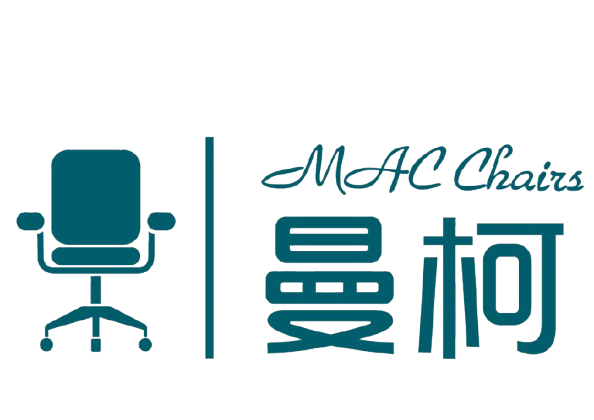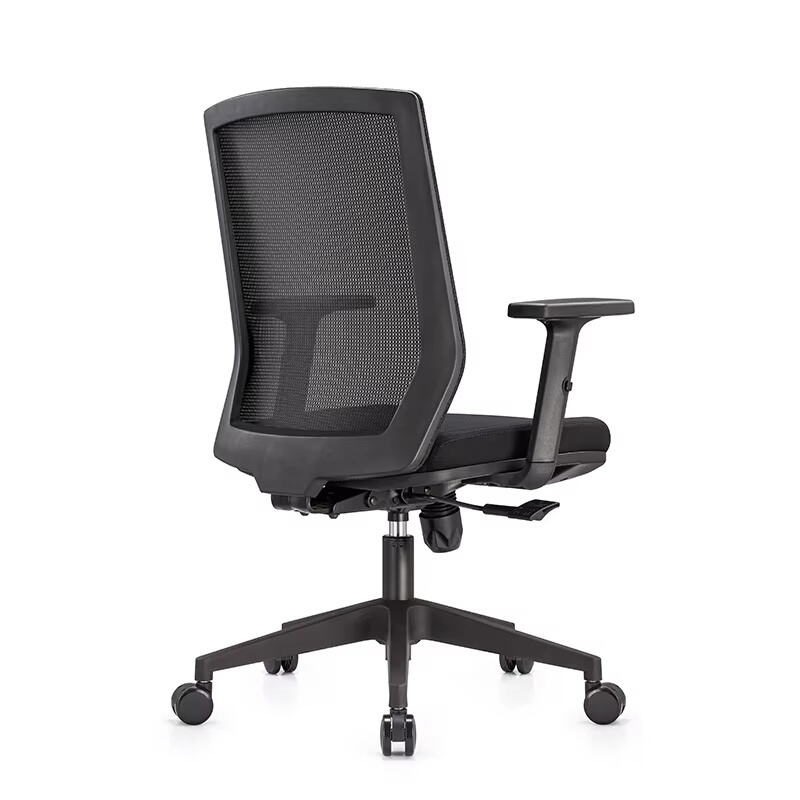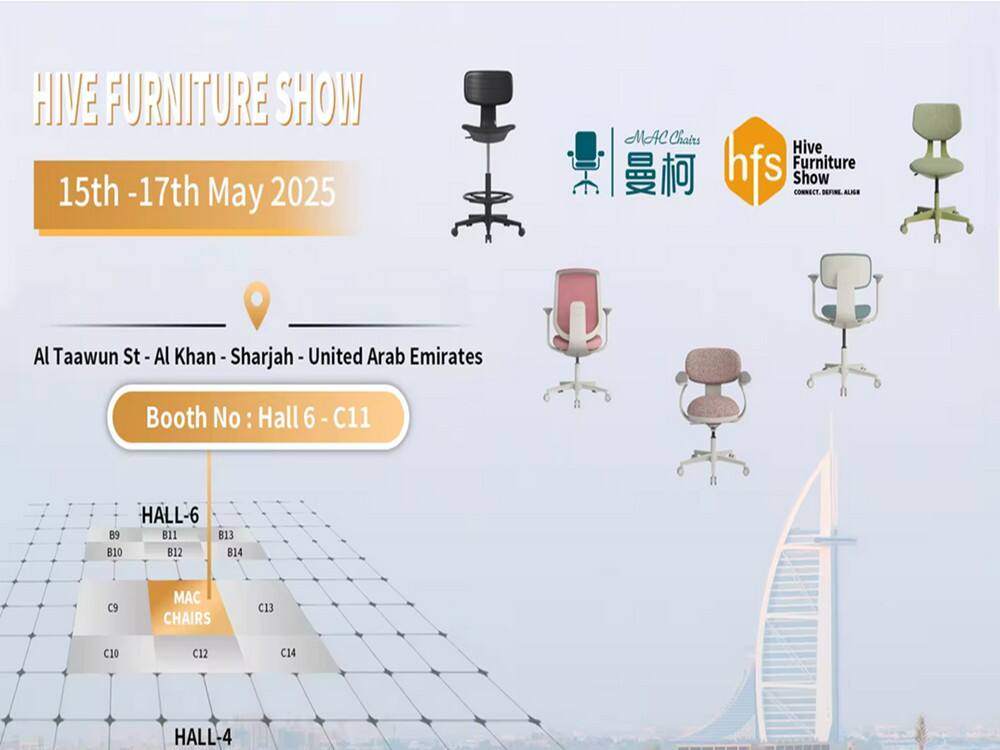
Design Elements of Modern Reception Chairs
Minimalist Aesthetics in Contemporary Design
Modern reception chairs with minimalist design are catching on fast because they create that clean, professional vibe companies want these days. The simple lines and functional shapes just don't clutter up the space like some fancy designs might. Take a look around office lobbies and you'll spot classics like the Eames Molded Plastic Chair or maybe the Saarinen Executive Armchair sitting there looking sleek yet totally practical. These pieces manage to be stylish without screaming for attention. According to recent market research, about six out of ten businesses now prefer minimalist interior styles for their offices. They see benefits beyond looks too many report better employee focus and overall satisfaction when workspaces follow this approach to design.
Color Trends for Professional Spaces
Color psychology matters a lot in professional spaces when it comes to building trust and projecting professionalism. Most offices go with blues and greys because they tend to feel calm and reliable, especially in waiting areas where first impressions count. The earth tones we see more often now too – think beiges and taupes – create that warm, down-to-earth vibe people respond to. Interior designers have noticed that these color choices actually do affect how clients view the business and what kind of mood folks get into at work. A study from the American Society of Interior Designers points out something interesting: spaces painted in softer blues can boost productivity around 15% give or take. That's pretty telling about how much our surroundings influence everyone who walks through those doors.
Innovative Shapes for Visual Impact
Reception chairs with creative shapes really stand out visually and help businesses make their mark in crowded markets. These days many companies are going for chairs with interesting forms like sharp angles on the backrests or off-kilter designs that look good while still being comfortable to sit in. Take the Knoll Womb Chair for example it has this distinctive curved shape that lets people relax without slumping around, plus it looks pretty cool too. Offices that spend money on these kinds of designs tend to see better employee engagement and more creative thinking according to some research published in Business Design Journal. Looks matter in workspaces after all, and smart companies know how important it is to create environments where both function and style come together.
Ergonomic Considerations for Visitor Chairs
Lumbar Support and Posture Alignment
Visitor chairs really need good lumbar support if people are going to stay comfortable during long waits. The right support keeps spines aligned and takes pressure off those lower back muscles, something that makes all the difference when sitting for hours on end. Research from places like Harvard Business Review actually points out that offices with better seating options see fewer cases of back pain among staff. Look at what works in workspaces and apply it here too. Most effective visitor chairs come with adjustable backs, seats shaped to fit the body naturally, and extra padding where the lower back needs it most. Adding these touches isn't just about making visitors feel good while they wait around; it shows genuine concern for their physical comfort throughout their entire visit.
Adjustable Features for Diverse Users
The adjustable nature of visitor chairs really matters when it comes to fitting various body shapes and personal preferences so people actually feel comfortable sitting down. Most modern office chairs designed for ergonomics now offer things like height adjustment for seats, movable armrests, and backrests that can be reclined to different angles. These adjustments make a big difference in how someone experiences their time in waiting areas or meeting spaces. We've seen this trend especially in healthcare facilities and corporate offices where visitors range from teenagers to senior citizens. Industry reports point to rising interest in flexible office furniture solutions across sectors. The numbers back it up too many companies report better guest feedback scores after upgrading to chairs with these kinds of adjustments. When businesses invest in visitor chairs with proper adjustability, they tend to see happier customers and smoother operations overall.
Breathable Materials for Extended Comfort
When it comes to visitor chairs, breathable materials really matter for keeping people comfortable over time because they let air circulate and help regulate body temperature. Mesh fabric works great here, along with those special moisture wicking materials that actually pull sweat away from the skin. People tend to stay cooler and more at ease when sitting in these types of chairs, especially if they're waiting around for hours. Leather looks fancy sure, but it doesn't breathe nearly as well as fabric options do. That's why many facilities opt for breathable alternatives instead. The folks who sit there all day will tell you how much difference good materials make. Experts agree too, which is why most modern waiting areas now feature chairs made with breathable fabrics rather than traditional leather ones.
Material Choices for Style and Function
Comparing Mesh vs. Fabric Upholstery
Picking between mesh and fabric for office chair upholstery really boils down to what matters most in the workspace. Mesh is great because it lets air circulate, so people don't get hot and sweaty after sitting all day. That's why many companies go for mesh these days, especially since offices are trending toward cleaner lines and high-tech looks. The material itself is pretty light too, which makes chairs easier to move around if needed. Fabric options give employers way more choices when it comes to color schemes and textures though. Some offices want something that matches their branding exactly, but fabrics do need more attention to keep them looking good over time. Stains happen, and cleaning can be a pain sometimes. At the end of the day, there's no one size fits all solution here. What works best will depend on how busy the space is, who'll be using the chairs most often, and whether aesthetics or function takes priority in that particular setting.
Leather Options for Premium Reception Areas
Leather office chairs just scream luxury and class, particularly when placed in those upscale reception areas where first impressions matter most. These seats last forever and never go out of style, making them worth every penny spent both looks-wise and functionally speaking. Taking care of leather depends on what kind we're talking about. Full grain leather gets better with age but needs some love in the form of regular conditioning. Bonded leather is cheaper to maintain but won't stick around as long. Industry data shows companies that splurge on quality materials like genuine leather create a much more professional atmosphere. Clients tend to walk away impressed, which might not seem directly connected to profits at first glance, but trust me, these subtle details do make a difference in the bottom line over time.
Durability Factors in High-Traffic Spaces
Choosing tough materials matters a lot when setting up chairs in places where people constantly move around. Steel frames and good quality plastic parts stand up better against regular bumps and scratches. Adding special fabrics or tight weave nets on the seats actually makes these chairs last much longer. We've seen companies save money over time because they don't have to replace broken chairs every few months. That's why investing in solid office furniture pays off in the long run for most businesses. Plus, well made chairs just look better too, which helps keep an office looking neat even when it gets busy all day long.
Space Optimization Strategies
Balancing Style and Practical Layouts
Getting the mix right between looks and practicality in office reception areas really matters when wanting to create a space that feels inviting yet works well. When picking out furniture, it needs to match the overall vibe of the office while making sure people can move around comfortably and get where they need to go easily. The right pieces should look good but still serve their purpose without taking up too much room. Let me share a few ideas on how to strike this balance effectively in most office settings.
- Choose pieces that blend beauty with utility, such as ergonomic office chairs that offer comfort and are visually appealing.
- Arrange seating to promote ease of interaction, ensuring an inviting yet professional atmosphere. This can be achieved by placing chairs around central tables or in clusters to encourage conversation.
- Utilize space planning softwareâsuch as SketchUp or AutoCADâto visualize different layouts and optimize the arrangement before investing in new furniture.
By strategically planning your layout and selecting furniture that marries style with practicality, you can create a reception area that reflects your brand while catering to the functional needs of your environment.
Modular Solutions for Flexible Spaces
Modular furniture offers a dynamic solution to crafting flexible and adaptive reception areas that can evolve with changing needs. Some of the primary benefits of modular setups include:
- Versatility: These pieces can be rearranged, added, or reduced to suit different spatial requirements or functions, making them ideal for dynamic office environments.
- Case Studies: Numerous organizations have successfully implemented modular furniture. For instance, tech firms often use modular solutions to encourage teamwork and collaboration, showcasing the strategic advantage of flexibility.
- Designs: Popular modular furniture designs like sectional seating or multi-functional tables blend aesthetic appeal with operational utility, providing cohesive yet adaptable solutions to optimize space usage.
Overall, by investing in modular furniture, businesses can efficiently cater to ongoing changes in employee interaction and space usage, ultimately facilitating a more personalized work environment that maintains an aesthetically pleasing appearance.
Branding Through Furniture Selection
Creating Lasting First Impressions
The right furniture makes all the difference when it comes to creating good first impressions in business spaces. Think about someone stepping into a reception area - what they see right away shapes how they feel about the whole place. Studies show that things like colors, shapes, and where pieces are placed actually affect how people perceive a company. Take a sleek, well-organized waiting room for example. That kind of setup tends to make folks think the business is professional and trustworthy. Industry data backs this up too. Companies that spend time getting their furniture right often report better reactions from clients and customers. Office furniture isn't just about looking nice though. Good choices create comfort while still broadcasting important messages about who the company is before anyone even meets anyone face to face.
Aligning Chair Design with Corporate Identity
Matching furniture looks with corporate branding helps build a consistent identity across all touchpoints. When picking out furniture pieces, businesses should look for items that reflect their brand colors while still maintaining good looks and comfort levels. Putting brand elements like logos or signature colors right into the furniture itself creates that perfect mix between looking great and showing off what the company stands for. Offices become walking advertisements when done right. Take Google for instance they really nailed this concept in their workspaces. Their offices are filled with bright, colorful seating arrangements that match their fun-loving approach to business. The furniture isn't just decorative either it actually supports their image as pioneers in tech innovation. People who walk through those spaces remember the experience long after they leave.











